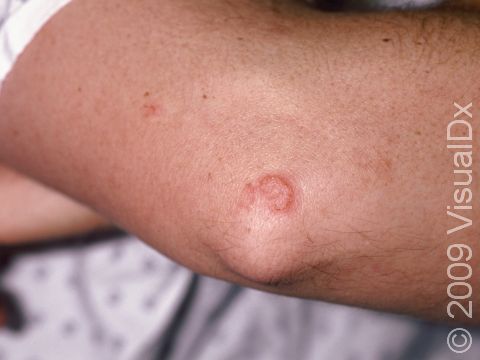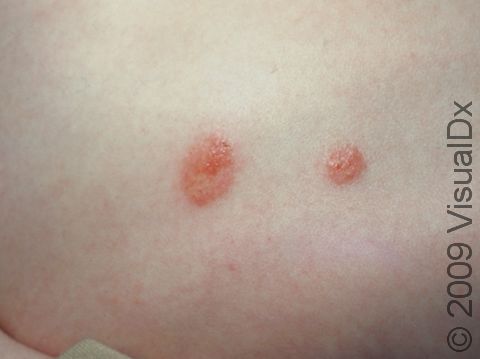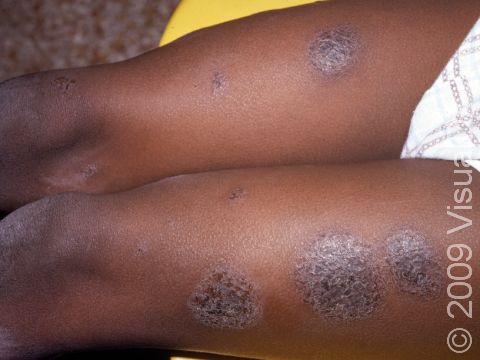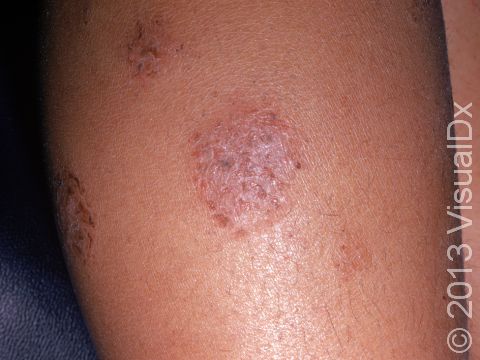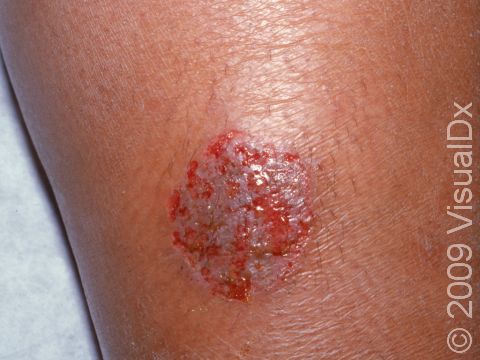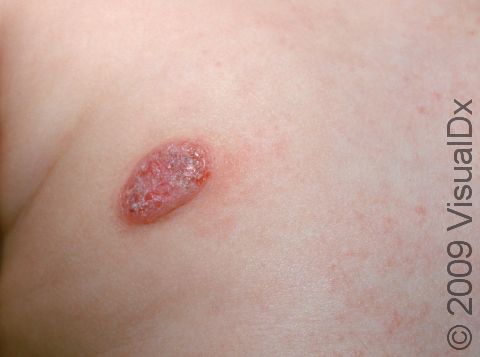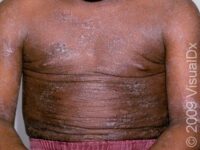
Nummular Dermatitis
Nummular dermatitis is inflammation that involves coin-shaped, raised areas on the skin that are scaly and itchy.
The cause of nummular dermatitis is not well understood, but it seems to be more common in people who have allergies, live in cold or dry climates, or have sensitive skin in general.
Nummular dermatitis, as well as the other forms of eczema (atopic dermatitis), is not contagious. It is often chronic, with symptoms clearing up and then recurring indefinitely. Treatment involves keeping the skin hydrated by reducing bathing and applying frequent moisturization.
Who's At Risk?
People who have other allergies, asthma, or sensitive skin are generally more likely to develop any of the eczema-type rashes, including nummular dermatitis. Although anyone of any age can develop nummular dermatitis, including children, it is most common in older individuals (ages 15-25 and 50-65 years). In children, the age of onset is often around age 5 years.
Signs & Symptoms
Nummular dermatitis is most commonly found on the trunk of the body and/or the arms or legs. Round or coin-shaped, scaly plaques (raised areas larger than a thumbnail) are seen, often with small cracks in the skin. The plaques appear red in lighter skin colors. In darker skin colors, the redness may be harder to see or may appear more purple or gray. The skin can become thicker in these areas. The itch can cause children to become irritable.
Self-Care Guidelines
Maintaining healthy skin is very important for children with nummular dermatitis.
- Moisturizing skin-care routines are essential.
- Use mild, nonsoap cleansers such as Cetaphil or Dove Unscented Beauty Bar.
- Take short (5 minutes or less) lukewarm baths or showers.
- Apply a thick moisturizer such as petroleum jelly (eg, Vaseline), Aquaphor ointment, Eucerin cream, CeraVe cream, or Cetaphil cream to damp skin daily after bathing and at least twice daily.
- Attempt to minimize exposure to heat, humidity, detergents, soaps, abrasive clothing, chemicals, smoke, and stress.
- Fragrance-free laundry detergent (eg, All Free and Clear) may be beneficial.
- Keep the home humid with a humidifier, especially in the bedroom.
- Wear loose-fitting clothing and avoid irritating fabrics (eg, wool).
- Over-the-counter 1% hydrocortisone cream or ointment can help relieve itch in mild cases.
Treatments
Your child’s medical professional may:
- Prescribe topical steroids to apply to the affected areas twice daily.
- Prescribe oral antihistamines to help relieve itching.
- Prescribe oral or topical antibiotics if the area becomes infected.
Visit Urgency
If there is a lack of response to self-care measures or if your child’s condition worsens or flares, see their medical professional.
References
Bolognia J, Schaffer JV, Cerroni L. Dermatology. 4th ed. Philadelphia, PA: Elsevier; 2018.
James WD, Elston D, Treat JR, Rosenbach MA. Andrew’s Diseases of the Skin. 13th ed. Philadelphia, PA: Elsevier; 2019.
Kang S, Amagai M, Bruckner AL, et al. Fitzpatrick’s Dermatology. 9th ed. New York, NY: McGraw-Hill Education; 2019.
Paller A, Mancini A. Paller and Mancini: Hurwitz Clinical Pediatric Dermatology. 6th ed. St. Louis, MO: Elsevier; 2022.
Last modified on August 21st, 2023 at 3:04 pm
Related Skin Conditions


Not sure what to look for?
Try our new Rash and Skin Condition Finder
